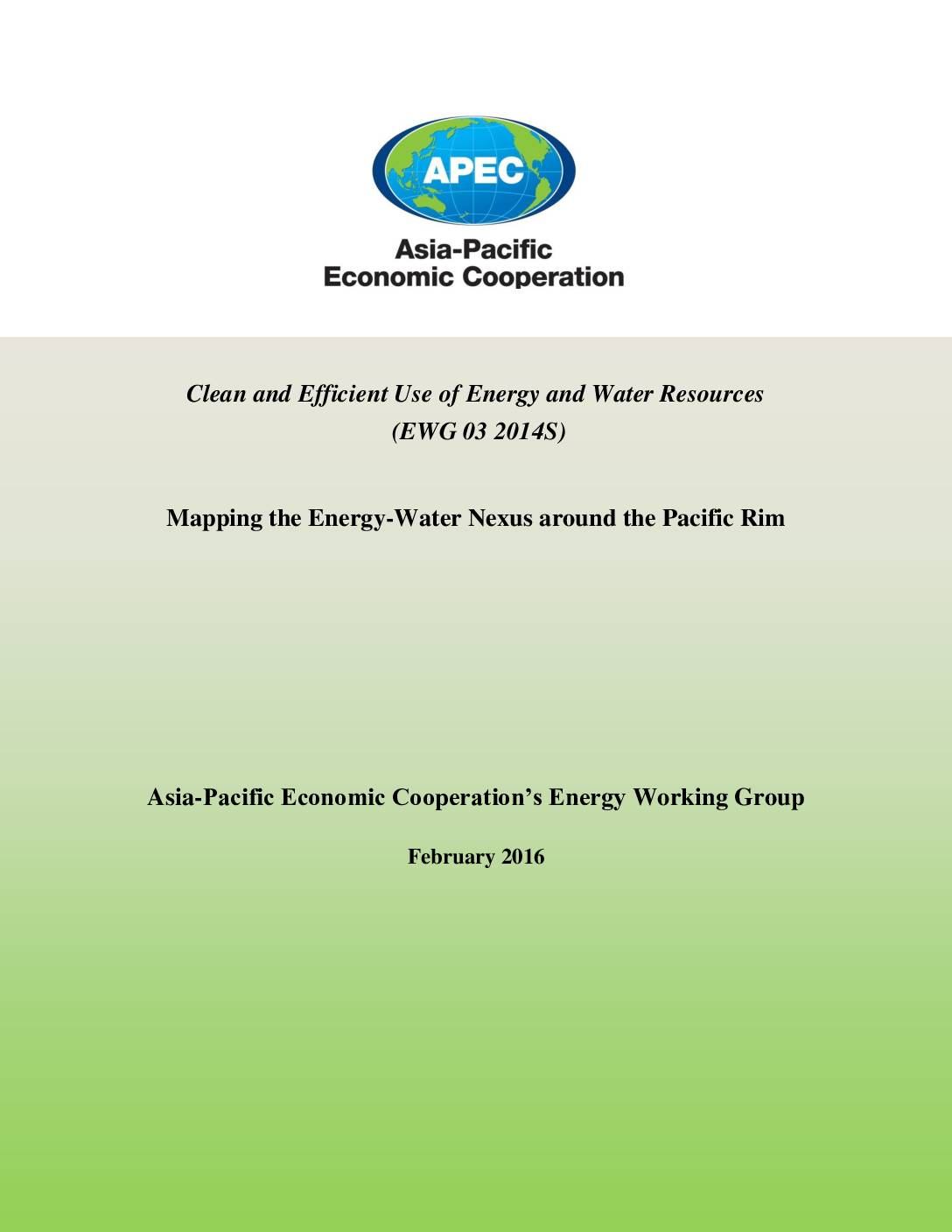Energy production requires water, while water delivery requires energy. This important interplay has been gaining considerable interest in an international context. A few examples include energy and water as the theme of the 2014 World Water Day (UN 2014), with the corresponding World Water Development Report (WWAP 2014) devoted to exploring how water-related issues and choices impact energy and vice versa. The Water for Energy Framework was launched during the 6th World Water Forum in 2012 to provide a common language for defining the impacts of energy on water (EIP 2015). The World Economic Forum issued a report in 2014 to inform energy policy-makers on nexus issues (WEF 2014), while the World Bank initiated their Thirsty Energy program to support countries efforts to proactively manage energy and water together (WB 2013). And, for the first time the International Energy Agency (IEA) included analyses and projections of energy impacts on water in the World Energy Outlook (IEA 2012). Such interest is driven by the fact that both energy and water are at the top of the global development agenda (Malone 2014), yet significant policy gaps exist in managing this nexus.
The importance of the energy-water nexus is signaled by the intensity of the interaction. Specifically, in 2010 global water withdrawals for energy production were estimated to be 583 billion cubic meters (Bm3 ) representing 15% of the world’s total withdrawals, of which 66 Bm3 were consumed (IEA 2012). The water sector was likewise thirsty for energy as 8% of energy consumption was used to lift, treat, and move water (WWAP 2014). Growing populations and economies threaten to intensify the energy-water nexus. By 2035, water withdrawals could increase by 20% and consumption by 85%, driven by a shift towards higher efficiency power plants with more advanced cooling systems (that reduce water withdrawals but increase consumption) and increased production of biofuel (IEA 2012). Given that 1.2 billion people currently live in areas with physical scarcity of water (UNDP 2007), there is an increasing risk of conflict between power generation, other water users and environmental considerations. Similarly, the demand for electricity by the water sector is increasing given the expanding utilization of non-traditional water sources and the move to service the world’s 2.5 billion people who lack access to water sanitation and the 748 million that lack access to safe drinking water (WHO 2014).
Management of the nexus requires a clear understanding of the water used for energy production and the energy used to deliver water. Estimates at a global level have been developed by the IEA (2012) as noted above. However, the world is anything but uniform, characterized by strong regional differences in population, resource demand, resource endowment, type and extent of water and energy infrastructure, economics, and industrialization to name a few. These differences lead to variability in the energy-water nexus at the regional level. Recognizing this regionalization the World Water Development Report (WWAP 2014) explored the energy-water nexus across five different continental and sub-continental regions. A series of regional case studies appeared in a special issue of Ecology and Society (Hussey and Pittock 2012). Spang and others (2014) utilized existing national energy portfolio data to estimate the water consumption APEC Energy Working Group 7 February 2016 of energy production for over 150 countries. Additionally, there are a number of studies that focus on the energy-water nexus of an individual country (e.g., Cai et al. 2014; DOE 2014) or a specific aspect of the energy-water nexus in a particular country (Tidwell et al. 2013, Tidwell et al. 2014; Averyt et al. 2011).
In efforts to better inform the energy-water nexus dialogue, this paper builds on and extends the previously noted work in three important ways. First, water used in energy production is mapped across multiple economies and multiple use cases (e.g., thermoelectric power, fuel processing) at a subnational level to distinguish variability within economies. Second, the water used in energy production is put in context by drawing comparison with published measures of water risk (WRI 2015). Third, the energy used to lift, move and treat water is mapped across multiple economies and multiple use cases (e.g., wastewater services, desalination) at a subnational level. The analysis addresses the 21-member economies of the Asia-Pacific Economic Cooperation which are linked by shared geography and economy. The objective of the mapping is to quantify the energy-water nexus at a subnational level, pinpoint potential vulnerabilities, and identify opportunities for international collaboration.
Share this

Sector: Cross cutting
Country / Region: Asia
Tags: energy, impacts on systems and sectors, international development, water resources, water-energy-food nexusKnowledge Object: Publication / Report
Published by: APEC
Publishing year: 2016
Author: Vincent Tidwell, Barbie Moreland
